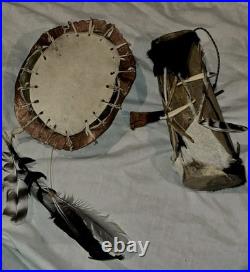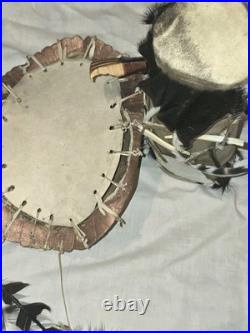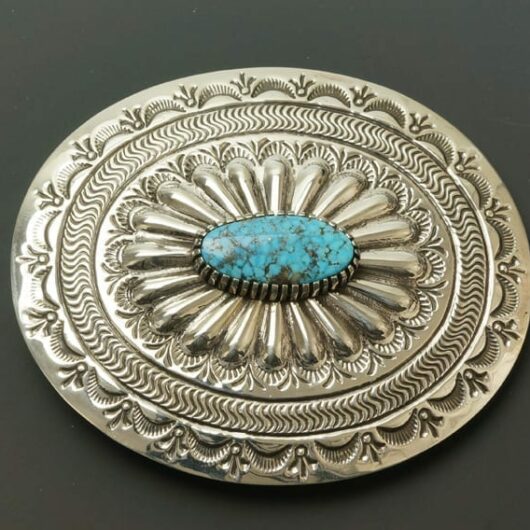
Beyond the Grid: Navigating the World of Authentic Native American Maps for Sale
Forget the glossy brochures and GPS coordinates. For the discerning traveler and collector, there’s a deeper cartography to explore: the world of authentic Native American maps. These aren’t merely navigational tools; they are living narratives, spiritual blueprints, and profound cultural artifacts that offer an unparalleled window into indigenous understanding of land, history, and identity. This isn’t about tourist trinkets; it’s about unearthing a piece of history, understanding its cultural gravity, and navigating the complex, yet rewarding, journey of ethical acquisition.
What Constitutes an "Authentic Native American Map"?
The very definition of "map" shifts dramatically when viewed through an indigenous lens. Eurocentric cartography typically relies on fixed coordinates, grids, and a bird’s-eye perspective. Native American mapping, however, is often fluid, experiential, and deeply embedded in oral tradition, ceremony, and practical knowledge of the landscape.

Authentic Native American maps for sale can take many forms, far beyond what one might typically envision on paper:
- Pictographic & Ideographic Maps: These are perhaps the most recognizable. Often drawn on animal hides (deer, buffalo), bark, or later, paper, these maps use symbols, figures, and stylized representations to depict routes, tribal territories, battle sites, sacred locations, resource areas, and even historical events. Examples include the Winter Counts of the Lakota, which, while primarily calendrical, often contain geographical references and movements.
- Sand Paintings (Navajo): While ephemeral and primarily ceremonial, the intricate designs of Navajo sand paintings are sophisticated spatial representations, often depicting sacred landscapes, mythological journeys, and spiritual topography. While an original sand painting cannot be "bought," high-quality, ethically produced reproductions or photographic documentations exist.
- Stick Charts (Micronesian, though conceptually similar indigenous mapping occurred): Though not continental Native American, the concept of stick charts (like those from the Marshall Islands) – where sticks represent ocean swells and shells represent islands – illustrates the ingenuity of non-paper-based spatial representation. Indigenous North American tribes had similar mnemonic devices for routes and resources.
- Oral Tradition & Storytelling: The most ancient and widespread form of indigenous mapping. Entire landscapes, migration routes, and resource locations were meticulously preserved and transmitted through epic stories, songs, and ceremonial performances. While not a physical object for sale, understanding this bedrock of indigenous cartography is crucial for appreciating physical maps.
- Early Colonial Interpretations: Many of the earliest "maps" depicting Native American territories were drawn by European explorers, but often based on information provided by indigenous guides. These hybrid maps, while not purely indigenous in creation, often contain crucial indigenous placenames, territorial boundaries, and route information, making them highly significant historical artifacts.
- Petroglyphs & Geoglyphs: Ancient rock carvings and large-scale ground drawings (like the Nazca Lines, though North America has its own examples) often served as markers, navigational aids, and sacred landscape descriptions. These are, of course, immovable and not for sale, but are part of the broader context of indigenous spatial understanding.


When we speak of "authentic Native American maps for sale," we are primarily referring to the first category – historical pictographic documents on hide or paper, or early colonial maps heavily influenced by indigenous knowledge.
The Historical and Cultural Gravitas
These maps are more than lines and symbols; they are profound cultural documents. They embody:
- Sovereignty and Territory: Before colonial borders, these maps articulated tribal lands, hunting grounds, and resource access, often with far greater detail and local understanding than any European chart.
- Sacred Geography: Many maps delineate sacred sites, ceremonial paths, and places of spiritual significance, reflecting a deep, symbiotic relationship with the land that transcends mere ownership.
- History and Memory: They can record migrations, treaties, battles, and significant events, serving as historical archives for generations.
- Ecological Knowledge: They often show resource distribution, seasonal movements of game, and water sources, demonstrating sophisticated environmental understanding.
- Worldview: They reveal how different cultures perceive and organize their world, offering insights into cosmology, social structures, and values.

Owning such a map is not just acquiring an artifact; it’s becoming a custodian of a story, a history, and a unique way of seeing the world.
Navigating the Market: Where to Find Them Ethically
The journey to acquire an authentic Native American map is as intricate as the maps themselves. This is a niche market requiring diligence, respect, and a keen eye.
- Specialized Dealers & Galleries: This is your primary and safest entry point. Reputable dealers who specialize in Native American art, artifacts, and historical documents often have deep expertise, established networks, and, crucially, a commitment to ethical sourcing. They can provide provenance, authentication, and crucial historical context. Look for dealers with long-standing reputations, memberships in professional associations, and transparent business practices.
- Auction Houses: Major auction houses (Sotheby’s, Christie’s, Heritage Auctions, etc.) occasionally feature significant Native American historical documents. These can be high-stakes environments, requiring prior research, budget setting, and often, an expert advisor to bid on your behalf.
- Museum Deaccessions (Rare): While rare, museums sometimes deaccession items from their collections. These are typically well-documented but will come with specific conditions and may be subject to repatriation laws.
- Reputable Online Platforms (with caution): While general antique sites exist, exercise extreme caution. The risk of misidentification, fakes, or unethically sourced items is significantly higher. Only consider platforms with robust authentication processes, detailed provenance, and strong buyer protection policies.
- Avoid: Flea markets, general antique shops, or non-specialized online marketplaces. The chances of finding a genuine, ethically sourced, and properly identified authentic map in these venues are exceedingly low, and the risk of acquiring a fake or a stolen item is high.
Crucial Considerations: Provenance and Ethics
The single most important factor when considering an authentic Native American map is provenance. This is the documented history of the item’s ownership, from its creation (or as close as possible) to its current seller. Strong provenance helps confirm authenticity, ensures the item was legally acquired, and, vitally, helps avoid items that might be subject to repatriation claims under laws like the Native American Graves Protection and Repatriation Act (NAGPRA) in the United States, which applies to human remains, funerary objects, sacred objects, and objects of cultural patrimony. While maps might not always fall under NAGPRA directly, the spirit of respectful and ethical acquisition is paramount.
An ethical dealer will be able to provide:
- Clear Chain of Ownership: How the item passed from one owner to the next.
- Documentation: Old appraisals, exhibition records, photographs, or historical accounts.
- Expert Opinions: Third-party authentication from recognized scholars or institutions.
Be wary of items with vague origins, "found in an attic," or "inherited from an unknown relative." Always ask probing questions and demand documentation.
What to Look For: Authentication & Valuation
Beyond provenance, several factors contribute to a map’s authenticity and value:
- Materials: Is it on appropriate material (hide, bark, period paper)? Are the pigments consistent with historical methods?
- Style & Iconography: Does the artistic style, symbolism, and iconography align with known tribal aesthetics and mapping conventions of the purported period? This requires significant comparative research.
- Age & Condition: How old is the map? What is its physical condition? Is there appropriate wear and tear for its age? Has it been restored, and if so, how well? Condition significantly impacts value.
- Rarity & Significance: Is it a unique example? Does it depict a historically important event or territory? Is it associated with a particular historical figure or tribe?
- Expert Appraisal: For any significant purchase, a third-party appraisal from a recognized expert in Native American cartography or ethnography is indispensable. This is an investment that protects your larger investment.
- Red Flags: Unbelievably low prices, lack of backstory, a seller who pushes for a quick sale, or a refusal to provide detailed information are all warning signs. The market for genuine artifacts is sophisticated; expect prices to reflect rarity, condition, and historical importance.
Beyond the Purchase: The Collector as Custodian
Acquiring an authentic Native American map is not the end of the journey; it’s the beginning of a new responsibility. Collectors become custodians of these invaluable cultural assets.
- Preservation: Proper conservation, display, and storage are crucial to protect the map from environmental damage (light, humidity, pests). Consult with conservation experts.
- Learning & Research: Continue to research the map’s history, the tribe it represents, and the stories it tells. Share this knowledge responsibly.
- Respectful Engagement: Understand that these maps carry deep cultural significance. Approach them with reverence, not merely as decorative objects.
- Potential for Repatriation: Be aware that in certain cases, items may be identified by tribal nations as belonging to their cultural patrimony. An ethical collector should be prepared to engage with these discussions respectfully, always prioritizing the long-term well-being of the cultural heritage.
The Traveler’s Perspective: Connecting Through Cartography
For the travel blogger, the pursuit of authentic Native American maps isn’t just a collecting hobby; it’s an extension of the travel experience itself. It’s a journey into different ways of knowing, seeing, and inhabiting the land.
Imagine holding a piece of hide that depicts a migration route your own travels have traced, or a map showing sacred mountains you’ve hiked. This tangible link deepens your understanding of a region far beyond what any modern guidebook can offer. It allows you to:
- See the Landscape Differently: Understand the indigenous names for rivers and mountains, the traditional uses of flora and fauna, and the spiritual significance embedded in every feature.
- Connect with History: Feel the weight of generations of knowledge, survival, and adaptation.
- Appreciate Cultural Diversity: Witness the brilliance of indigenous innovation in information transfer and spatial reasoning.
- Foster Responsible Tourism: By understanding and respecting indigenous perspectives on land, you become a more conscious and respectful traveler, advocating for the preservation of both natural and cultural heritage.
Conclusion: A Journey of Discovery and Reverence
The world of authentic Native American maps for sale is a challenging, yet immensely rewarding, landscape to navigate. It demands rigorous research, ethical consideration, and a profound respect for the cultures from which these treasures originate. Far from being mere curiosities, these maps are powerful testaments to human ingenuity, cultural resilience, and an enduring connection to the land.
For the traveler who seeks more than just sights, for the collector who values history and cultural integrity above all else, delving into these indigenous maps offers an unparalleled opportunity. It’s a chance to hold a piece of history, to learn from ancient wisdom, and to see the world not just through a different lens, but through a different, deeply rooted, and profoundly beautiful map. This journey, like any great expedition, promises discovery, challenges preconceptions, and ultimately, enriches the soul.
